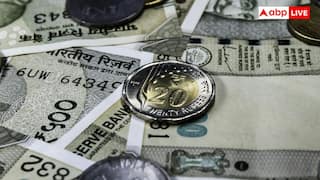Bangladesh Unrest: Despite Ban On Social Media, How Are Protesters Managing To Post Photos & Videos On Social Media? Find Out
Footage has surfaced on social media showing citizens entering Ganabhaban, the official residence of the Prime Minister of Bangladesh, raising questions about how they are communicating.

Bangladesh Protests: In response to mounting untest, the Bangladeshi government has imposed a nationwide ban on several popular social media platforms, including Instagram, TikTok, WhatsApp, and YouTube. Announced on August 2, the move aims to curb the spread of protest-related content online. Additionally, reports indicate that internet services were temporarily suspended across the country.
The government first disabled mobile Internet services on Sunday in an effort to maintain order. By late Monday morning, broadband Internet was also shut down, but both mobile and broadband services were restored after a brief three-hour outage.
Protester have managed to maintain their coordination and communication despite these efforts to stifle online activity.
How Are Citizens Bypassing Restrictions?
Despite the government measures, videos and images from the ongoing protests continue to emerge online, as reported by News18. This suggests that citizens are finding ways to bypass the restrictions.
Protestors on top of the Prime Minister’s residence (Ganabhaban) in Bangladesh. pic.twitter.com/lgN72DDNh9
— Areeb Ullah (@are_eb) August 5, 2024
Ganabhaban, the official residence of Bangladesh PM Hasina stormed by protestors pic.twitter.com/aMbp3KIBEn
— Sidhant Sibal (@sidhant) August 5, 2024
Remarkably, footage has surfaced on social media showing citizens entering Ganabhaban, the official residence of the Prime Minister of Bangladesh, raising questions about how they are communicating under such restrictive conditions.
As reported by News18, while the use of virtual private networks (VPNs) is a well-known method for bypassing internet censorship, protesters are employing a variety of other techniques as well. VPNs redirect internet traffic through secure servers in different locations, allowing users to access blocked platforms.
In addition to VPNs, protesters are reportedly also using proxy servers, encrypted messaging apps, alternative platforms, and mirror sites to evade government censorship. Tools like Tor and peer-to-peer networks have also been instrumental in maintaining unrestricted online access, reported News18.
The government's efforts to control the flow of information and manage the protests continue, but the persistence of protestors in finding ways to communicate and organize suggests a challenging road ahead for authorities.
Related Video
Apple creates a new record in iPhone sales after launch of iPhone 16 | ABP Paisa Live





































